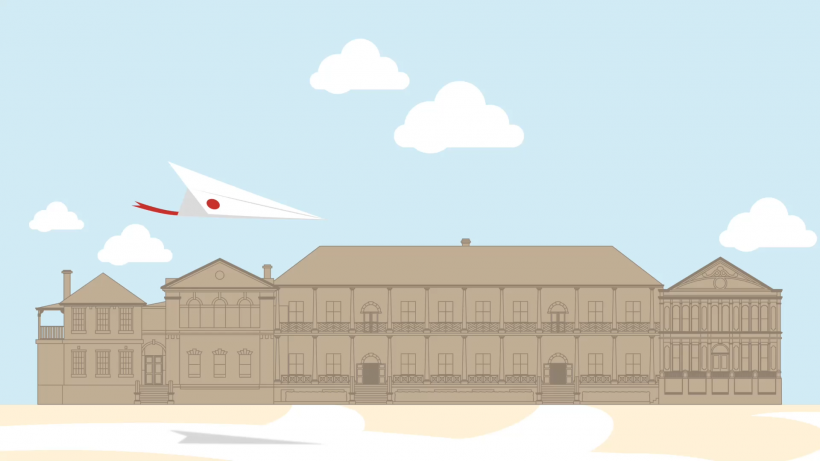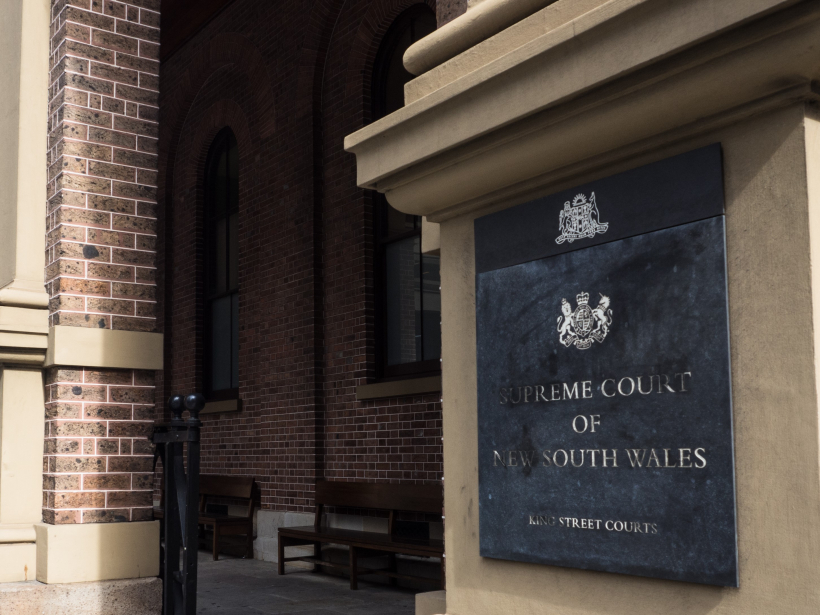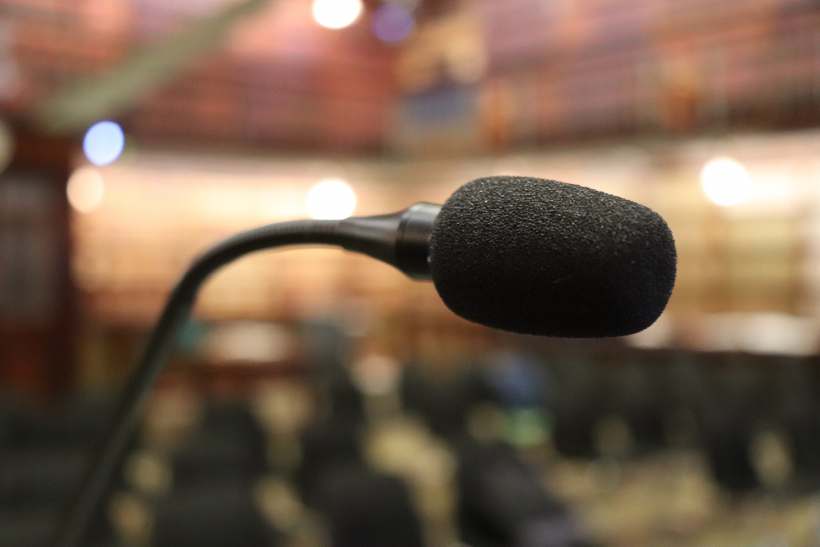What Will I Learn
- The following information and activities will help you to understand the role of the Parliament
- You will learn about how this structure underpins the system of government in NSW
What Does The Parliament Do?
In Australia we have a representative democracy based on the Westminster system.
The main functions of parliaments are:
- Forming government
- Making laws
- Representing voters and citizens
- Scrutiny of the Government
The Parliamentary Structure
The New South Wales Parliament is bicameral which means it is made up of two Houses.
- Lower House or Legislative Assembly and the
- Upper House or Legislative Council.
This means a bill has to be reviewed and passed by both houses before it can become a law.

Together with the
Governor of New South Wales the role of the Parliament is to make laws and to represent the people of NSW.
Watch a Regular Sitting Day
The Legislative Assembly
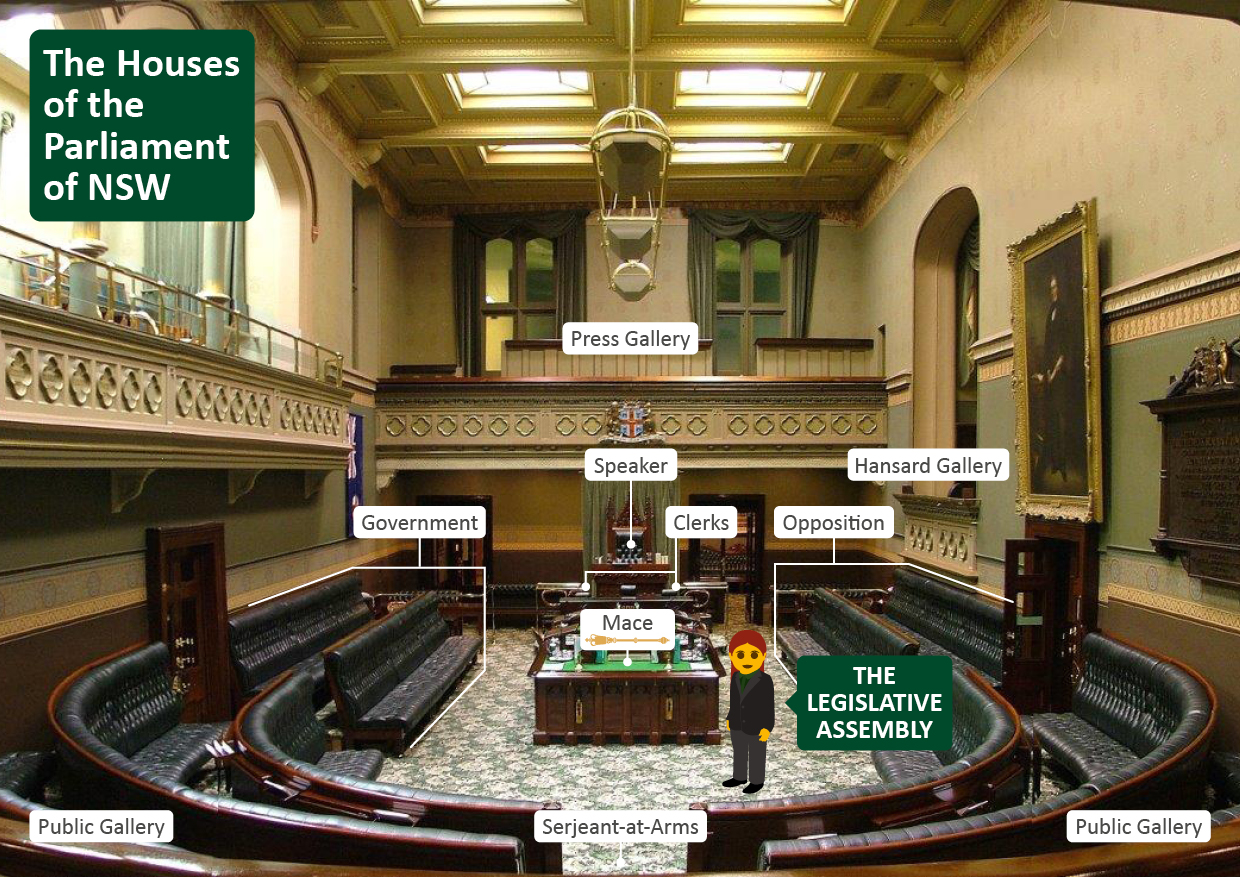
The main roles of Legislative Assembly are:
- To represent the people: There are 93 members of Parliament (MPs), each representing one of the 93 electorates in the State. Elections must be held every four years and members of the Legislative Assembly are elected for a four year term.
- To form the Government for New South Wales: The leader of the party which commands a majority in the Legislative Assembly after an election is commissioned by the Governor to form a Government and become Premier. The Ministers are Members of Parliament chosen from that party.
- To make laws: The Parliament makes laws by debating bills in each House, which, if agreed to by both Houses, are then sent to the Governor for assent.
- To keep the Government accountable to the people of New South Wales: Members ask questions of Ministers at Question Time, raise concerns or express opinions in parliamentary speeches, participate in parliamentary committees to inquire into issues, present petitions from their constituents to Parliament.
Go on a tour of the Legislative Assembly Chamber
The Mace
The Mace was gifted in 1974 by the Jewish Board of Deputies to the Legislative Assembly. Made of silver and gold it is 1.5m long and weighs 7 kgs.

The mace is a historical and ceremonial part of the Westminster Parliaments. It is carried into the Legislative Assembly by the Serjeant-at-Arms as a symbol of the authority of the Speaker.
While parliament is sitting the crown of the Mace faces the Government side of the chamber.
Traditionally the Mace was a medieval weapon but its ceremonial use was part of the functioning of the House of Commons by 1629. The NSW Parliament has adopted many of the ceremonies and traditions associated with the mace and used by all Australian Lower Houses of Parliament.
The Legislative Council
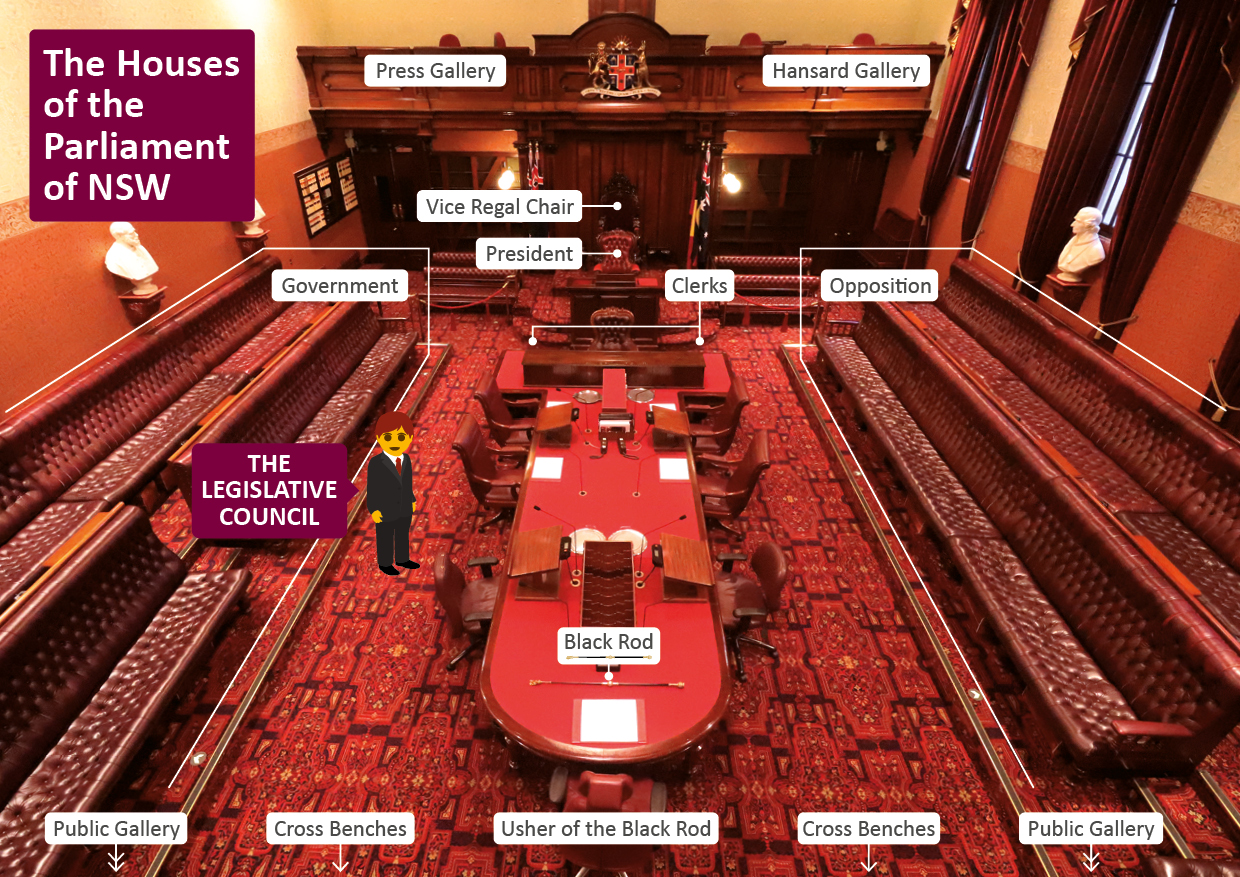
The main roles of the Legislative Council are:
- To represent the people: There are 42 members of the Legislative Council (MLCs) elected for eight years each representing the whole State of New South Wales. Every four years at the State election 21 members are elected.
- To make laws: The two Houses of the New South Wales Parliament have equal power in the making of laws. The Legislative Council can amend or reject any bill sent to it by the Legislative Assembly. Bills can also start in the Upper House. The only exception is money bills which must originate in the Lower House.
- To keep the Government accountable to the people of New South Wales: The Legislative Council is also known as the House of Review. It keeps Government accountable by debating bills; reviewing legislation; inquiring into issues through the committee system, including the annual Budget Estimates inquiries; ordering the Government to table state papers in the House; questioning Ministers at Question Time.
Go on a tour of the Legislative Council Chamber
The Black Rod
Many of the symbols, practices and procedures of the New South Wales Parliament derive from those developed over the centuries by the English Parliament.
The Black Rod has been used by the NSW Upper House since 1856 and the current Black Rod was presented by the Bank of NSW in 1974 and is the third in use by the Legislative Council.
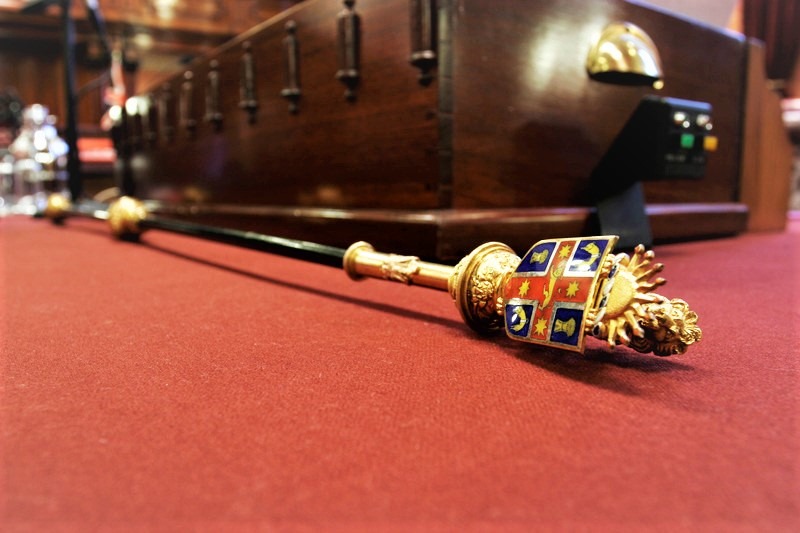
While parliament is sitting the crown of the Rod faces the Government side of the chamber. It symbolises the authority of the President and is placed at the end of the central table.
Who Does What?
There are three types of power:
- Legislative
- Executive
- Judicial
Each branch has its own powers and responsibilities and each, to some extent, is separate from the other. Each also has some power or authority over the others. No one branch can control all power in a democratic system. This is referred to as the separation of powers, discussed in detail in a dedicated page.
Where Does The Government Fit In?
The Government is determined through a majority at an election, a common feature of Westminster Parliaments. When no party or coalition gains a majority at election but forms an agreement with independents or minor party to gain Government it is known as a hung parliament or minority government.
The Government is made up of the Ministers, the Premier, as well as all the backbenchers who as a party or a coalition of parties, has gained a majority at an election. They are elected for four years.


